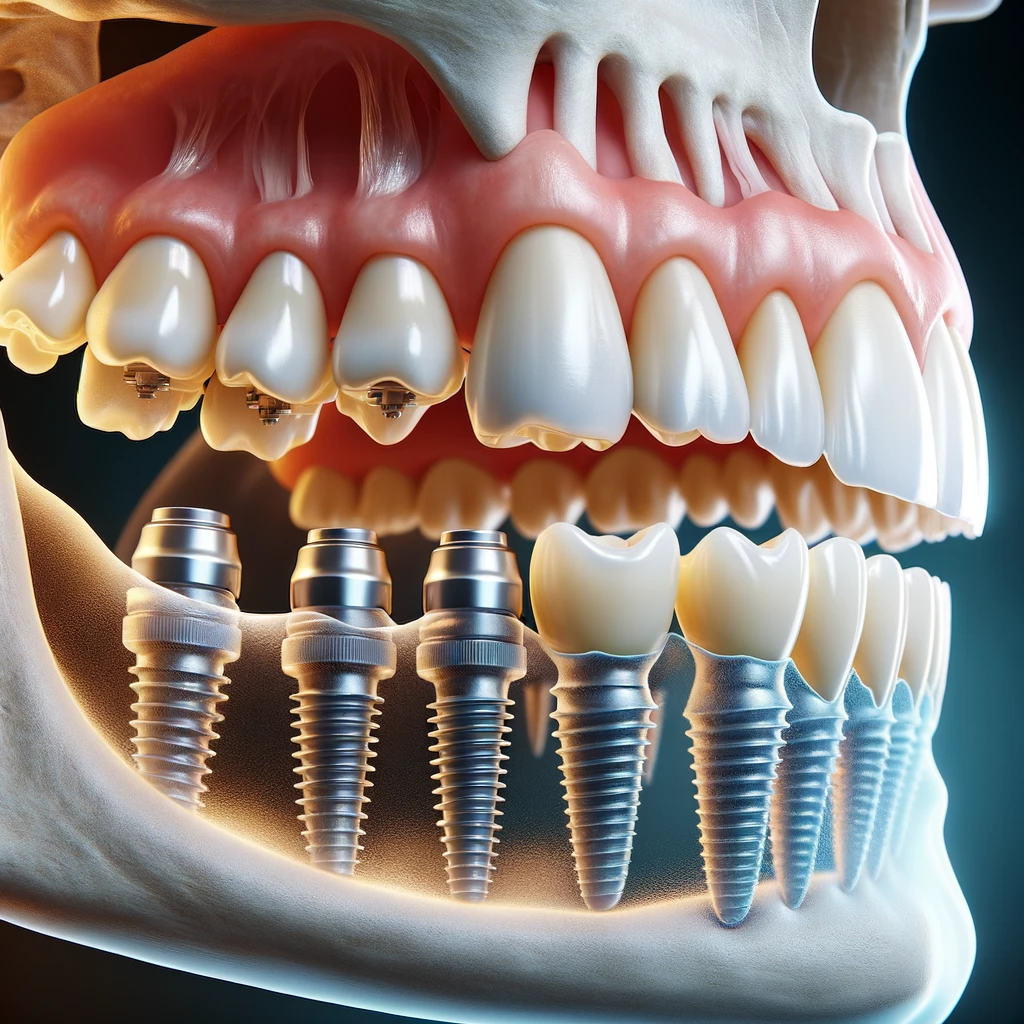A Biased View of Dental Sense
A Biased View of Dental Sense
Blog Article
The Main Principles Of Dental Sense
Table of Contents4 Simple Techniques For Dental SenseGetting My Dental Sense To WorkThe Basic Principles Of Dental Sense Not known Details About Dental Sense
are clinical devices surgically implanted into the jaw to recover a person's capability to eat or their look. They give support for artificial (fake) teeth, such as crowns, bridges, or dentures. When a tooth is shed as a result of injury or condition, an individual can experience issues such as rapid bone loss, defective speech, or modifications to chewing patterns that lead to discomfort.Oral implant systems include an oral implant body and dental implant joint and might additionally include an abutment addiction screw. Professional teeth whitening. The dental implant body is surgically inserted in the jawbone instead of the tooth's root. The dental implant joint is generally connected to the dental implant body by the abutment addiction screw and extends via gum tissues into the mouth to support the affixed fabricated teeth
(https://padlet.com/matthewmusic33101/dental-sense-ljnep063jjnbcvdg)Structure of The Dental Implant System selecting dental implants, talk to your oral provider regarding the prospective advantages and risks, and whether you are a candidate for the procedure. Points to consider: Your general health is an essential element in establishing whether you are a great candidate for dental implants, just how long it will take to heal, and for how long the implant might stay in location.
Smoking might influence the recovery procedure and decrease the long-term success of the implant. The healing process for the implant body may take numerous months or longer, during which time you typically have a temporary joint in area of the tooth. the dental implant treatment: Carefully comply with the oral hygiene directions offered to you by your dental supplier.
Some Known Questions About Dental Sense.
Implant failing can lead to the demand for an additional surgical procedure to repair or replace the dental implant system. Recovers the capability to chew Recovers cosmetic look Assists maintain the jawbone from shrinking due to bone loss Protects the wellness of the surrounding bone and gums Helps maintain adjacent (close-by) teeth secure Boosts lifestyle Damages to bordering all-natural teeth throughout implant placement Injury to the surrounding tissues during surgery, such as sinus opening Injury throughout surgical procedure (for instance, fracture of surrounding jawbone) Insufficient feature, such as seeming like the teeth do not bite with each other normally A sensation that the tooth hangs or turning in position resulting from an abutment screw loosening Implant body failure (looseness of the implant body) because of systemic infection, which might be more likely in clients with uncontrolled diabetes mellitus due to local infection in bone and periodontals sustaining the implant you can find out more body due to postponed recovery, which may be more probable in individuals who smoke Difficulty cleaning up the gums around the dental implant, resulting in bad oral health Neglected periodontal condition Post-surgical feeling numb as a result of nerve impingement or damages Always notify wellness treatment suppliers and imaging service technicians that you have dental implants prior to any type of magnetic vibration imaging (MRI) or x-ray treatments.
FDA is not familiar with any kind of damaging occasions reported for MRI or x-ray procedures with oral implants. Dental implants systems are usually made from materials that follow worldwide agreement standards of the International Company for Standardization (ISO) or ASTM International. These criteria have information of what makes a safe material.

An oral implant is a framework that replaces a missing tooth. With screw-like tools, the cosmetic surgeon inserts a dental implant right into the jawbone, and it acts as a support for an artificial tooth, called a crown.
The Buzz on Dental Sense
Some individuals are not qualified for oral implant surgical procedure. It is for oral doctors to operate on individuals with: acute illnessuncontrollable metabolic diseasebone or soft tissue disease or infectionIf these problems are dealt with, an individual can have the surgical procedure. In, dental cosmetic surgeons avoid operating people with: If people with any one of the above undertake oral implant surgery, there is a higher threat of the implant stopping working.

Dental implant surgery is a tailored procedure. It's not the same for everybody. Yet the complying with gives a general introduction of what you can expect your dental professional, dental specialist, periodontist or prosthodontist to do: Place the implant surgically. Offer you time to heal. Connect the article and last crown, bridge or denture.
Next, your doctor will carefully position the oral implant into your jaw. If your dental implant is near the front of your mouth, your dental professional will certainly make a momentary tooth for you to put on till you heal.
Getting My Dental Sense To Work
Your copyright can inform you what to anticipate in your scenario. During the healing phase, your jawbone must fuse to the dental implant. This process, called osseointegration, is important for stability and long-term success. This process can take anywhere from three to nine months. Sometimes, it might take longer.
When your dental implant heals, your dental professional can affix the abutment (tiny port post) and your last reconstruction (crown, bridge or denture). This usually takes about one hour to finish and may call for a second small surgery. You should not feel any kind of pain throughout your dental implant treatment because your supplier will use medicine to numb your gums.
Report this page